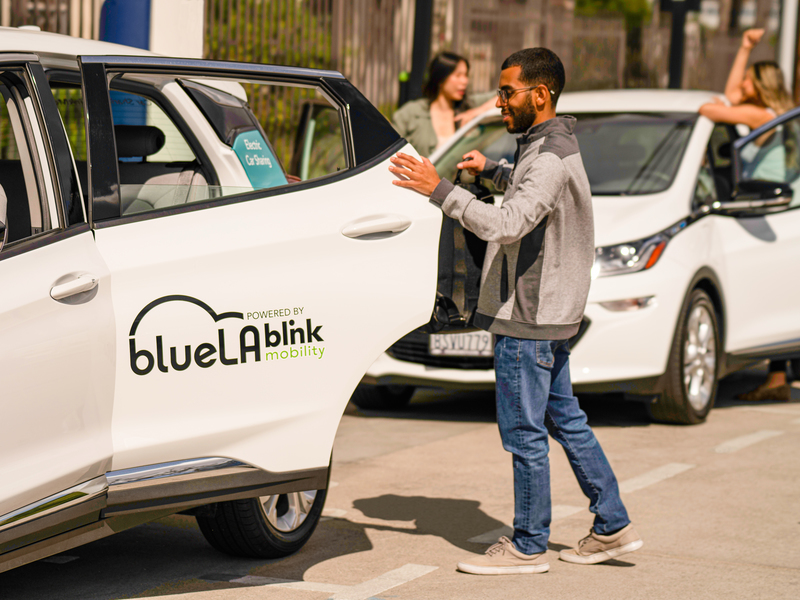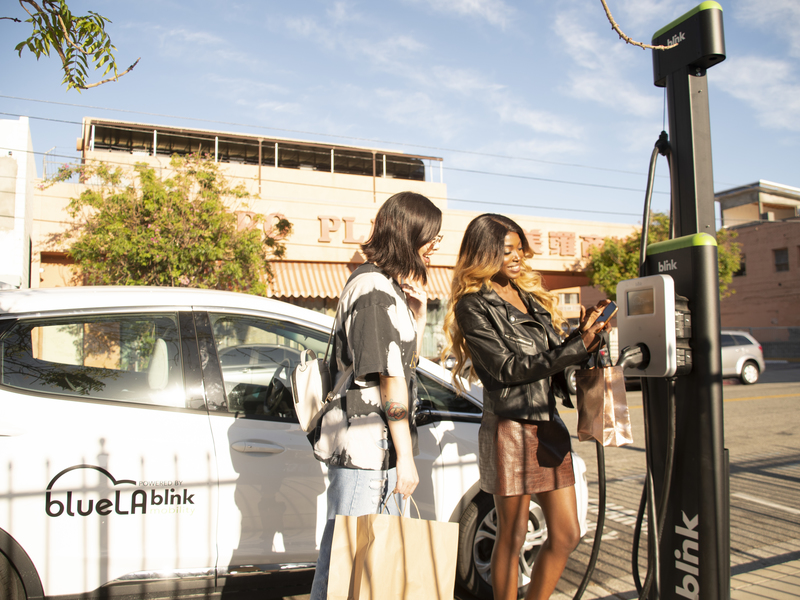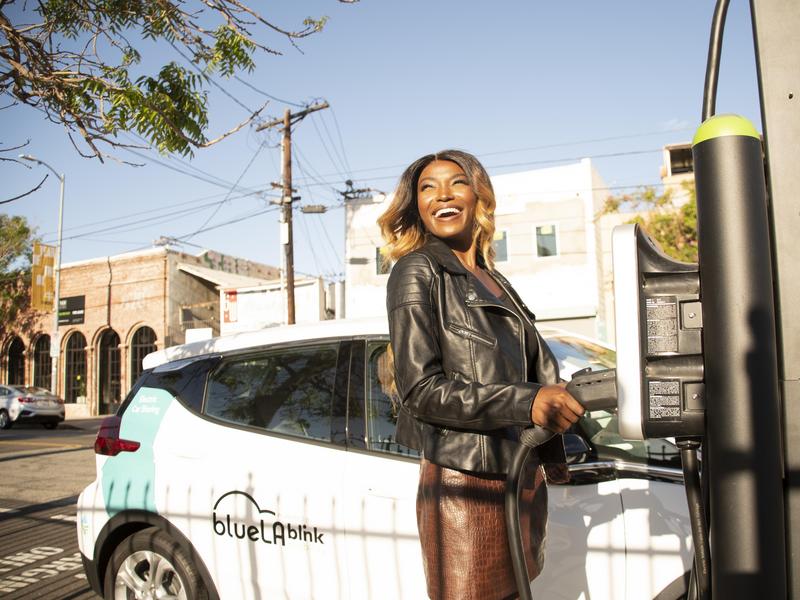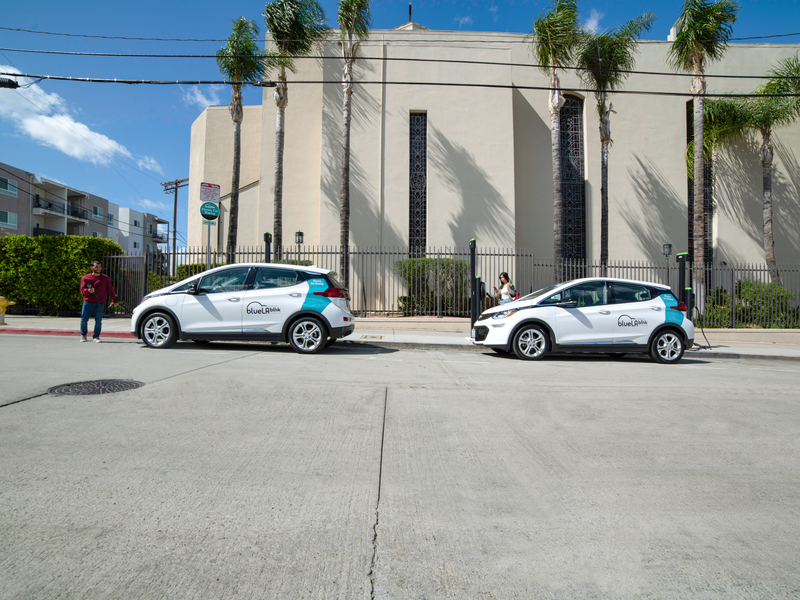If you live or work in Los Angeles, you’re probably familiar with the concept of car sharing. There are many such services in the region, promoting comfortable and handy solutions for those who want to avoid public transport but don’t want to clog the streets with more vehicles. Indeed, the car-sharing market is on the rise, and there are plenty of good reasons for its success. Let’s see what we can learn about them in this article.
Shared Growth
A few factors contribute to the sharing trend, one of which is the rise of smartphones. Smartphones made car renting, and consequently, car sharing, much more accessible. In fact, traditional car rental companies, such as Hertz, Avis, and Enterprise, are losing space to smartphone-based services. Such as, Blink Mobility that recently introduced new improvements to their mobile app allowing members to complete the rental process entirely from their phones. Before, members needed a physical Blink Mobility card when ending a rental. But now anyone can sign up for the EV car-sharing service and start driving with a smartphone device!
However, those companies haven’t stopped in time either, and back in 2012, Avis bought Zipcar in a transaction of nearly $500 million. Time has proven it was a wise investment. This year’s expected revenue for the car-sharing market is well over $11 billion and will continue to grow for the foreseeable future.
Key Advantages
There are many advantages to using a car-sharing service over owning a car. Car-sharing services are much cheaper, more flexible, and also greener. It’s even possible to use it as a passive income if you’re using your own vehicle to share with others or rent it to someone else. Additionally, you don’t need to drive the same car every day, as you can always rent something different.
Car sharing has become even greener recently, as the fleet of electric vehicles (EVs) has also increased. Indeed, EVs are becoming more accessible, enabling the creation of all-EV fleets. While electric vehicles still come with a higher price tag for buyers, renting one is much cheaper. When renting an electric vehicle, one doesn’t need to worry about maintenance costs, gas, or warranties.
About Blink Mobility
Blink Mobility launched in Los Angeles, in 2018, with an app that allows users to rent and share electric vehicles. The green initiative earned the company a grant from the California Air Resources Board and started as a pilot project. Now, the service is available in Koreatown, Westlake, Pico-Union, Boyle Heights, Echo Park, Downtown, and Chinatown.
The service is supported by the Los Angeles Department of Transportation, and it’s part of its green strategy towards mobility. In 2020, the company acquired BlueLA and invested heavily in the upgrade of EVs and charging stations. Additionally, it has invested in a better user experience for its mobile app.
Members just need to be 18 or above and have a valid driving license to join the platform. There are two types of membership available: Standard and Community. There’s no membership contract, though: only monthly fees. The value for the Standard membership depends on the monthly usage but starts at $5. The Community membership is granted upon income qualification and costs only $1 per month.
About Zipcar
Zipcar is one of the pioneering car-sharing companies in North America. It launched in 2000, in Massachusetts, with the goal of bringing the European model to the United States. Zipcar also focuses on electric vehicles, providing greener mobility in 26 states and dozens of cities where it operates. There are 325 electric vehicles in its fleet, intending to become fully electric by 2025.
In 2012, Avis acquired Zipcar. The transaction involved the purchase of 49% premium shares that concluded in 2013. According to the Avis Budget Group chairman and chief executive officer, Ronald L. Nelson, the operation significantly increased the company’s growth potential, not only in the American market but also abroad.
There are two types of subscriptions available: monthly and annual. In any case, these memberships include gas, secondary insurance, round-the-clock roadside assistance, and maintenance. Under those conditions, drivers have up to 180 miles per day included, paying $0.58 per extra mile. Zipcar is also promoting several social causes, such as diversity, gender equality, and environmental causes.
Heads Up
Now, it’s time to compare what each option has to offer. Both companies operate in Los Angeles and nearby areas, which is excellent for residents. Blink Mobility already operates with a full-EV fleet, while Zipcar aims to reach this point by 2025.
There are also differences in the terms and conditions of each service. While Blink Mobility has no cancellation fee, there’s a three-month commitment for members of Zipcar’s Plus plans. Also, there’s nothing similar to a Community fee at Zipcar. Although Zipcar is available in many more locations, membership prices are considerably higher.
Zipcar’s services are powered by the multinational car rental company Avis. Meanwhile, Blink Mobility is supported by the Los Angeles Department of Transportation (LADOT) and also by the Shared Use Mobility Center, the LA Mayor’s Office of Sustainability. Additionally, it’s supported by community-based organizations.
Ready to Try the Best Car Sharing Service in LA? SIGN UP with Blink Mobility Today, and Start Enjoying Rides for Less!
Recommend for You
Stay Informed
Join our mailing list for hot news and company updates.







